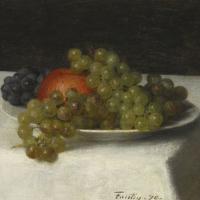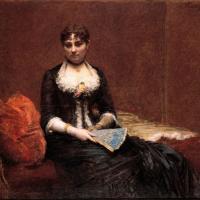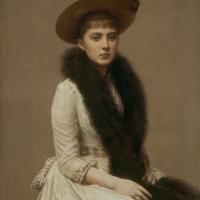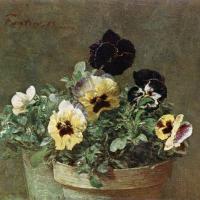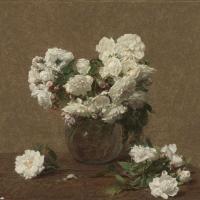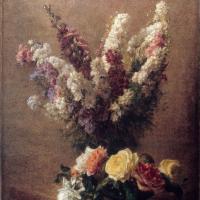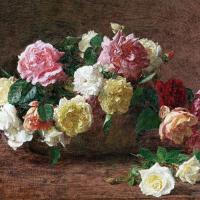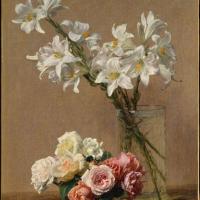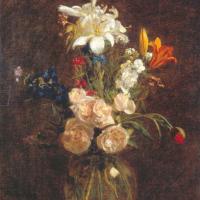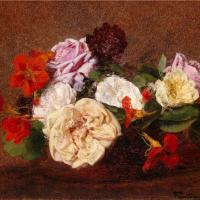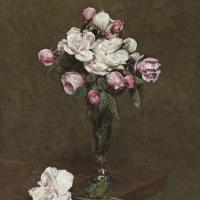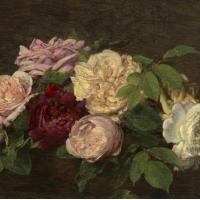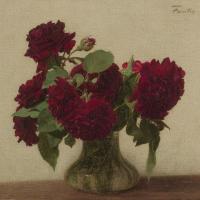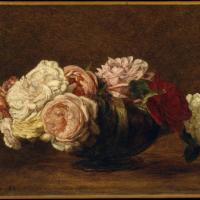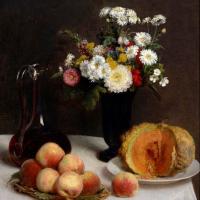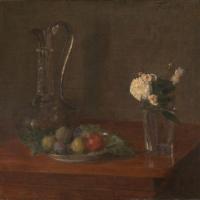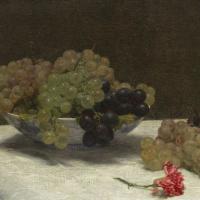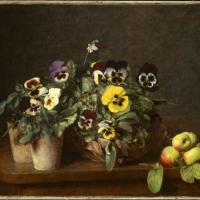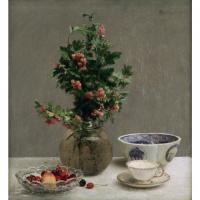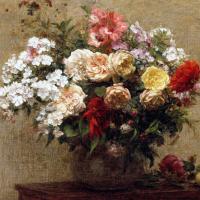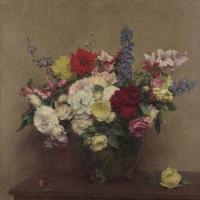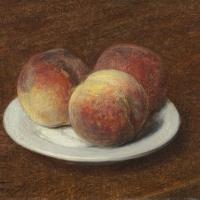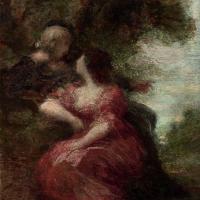Henri Fantin-Latour
Pommes Et Raisins
$450.00
Portrait Of Sonia
$480.00
Potted Pansies
$450.00
Roses Alma Vieberg
$510.00
Roses And Larkspur
$450.00
Roses and Lilies
$450.00
Roses And Lilies
$450.00
Roses De Nice On A Table
$450.00
Roses Foncees Sur Fond Clair
$510.00
Roses In A Bowl
$450.00
Still Life Of White Roses
$450.00
Still Life With A Carafe
$450.00
Still Life With Pansies
$450.00
The Rosy Wealth Of June
$510.00
Three Peaches On A Plate
$450.00
Troubadour Et Sa Dame
$450.00
Henri Fantin-Latour
Henri Fantin - Latour (1836-1904)
Henri Fantin-Latour (14 January 1836 – 25 August 1904) was a French painter and lithographer best known for his flower paintings and group portraits of Parisian artists and writers.
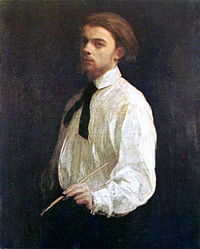
He was born Ignace Henri Jean Théodore Fantin-Latour in Grenoble, Isère. As a youth, he received drawing lessons from his father, who was an artist. In 1850 he entered the Ecole de Dessin, where he studied with Lecoq de Boisbaudran. After studying at the École des Beaux-Arts in Paris from 1854, he devoted much time to copying the works of the old masters in the Musée du Louvre. Although Fantin-Latour befriended several of the young artists who would later be associated with Impressionism, including Whistlerand Manet, Fantin's own work remained conservative in style.
Whistler brought attention to Fantin in England, where his still-lifes sold so well that they were "practically unknown in France during his lifetime". In addition to his realistic paintings, Fantin-Latour created imaginative lithographs inspired by the music of some of the great classical composers.
In 1875, Henri Fantin-Latour married a fellow painter, Victoria Dubourg, after which he spent his summers on the country estate of his wife's family at Buré, Orne in Lower Normandy, where he died on 25 August 1904.
He was interred in the Cimetière du Montparnasse, Paris, France.
His first major UK gallery exhibition in 40 years took place at the Bowes Museum in April 2011. Musée du Luxembourg presented a retrospective exhibition of his work in 2016-7 entitled "À fleur de peau".
The painting A basket of roses was used as the cover of New Order's album Power, Corruption & Lies by Peter Saville in 1983.


